Royals Hall of Fame
Introduction
Text-to-speech Audio
Established in 1986 and located in the Kauffman Stadium's Outfield Experience, this gallery space includes photographs and artifacts from Kansas City baseball teams dating from the late 19th century to the current era. Highlights include artifacts from past teams like the Kansas City Monarchs and Kansas City Athletics, along with World Series trophies from 1985 and 2015. Vistors can experience exhibits dedicated to the history of baseball that show how the game has changed over time alongside videos that replay some of the greatest moments in Royals' history. Additional highlights include a bust of Buck O'Neeil, Frank White's eight golden gloves, George Brett's Royals jersey wearing number 5, and items related to the Kaufmann family and the formation of the Royals.
Images
The entrance to the Hall of Fame includes a tribute to the players and coaches whose jerseys have been retired.
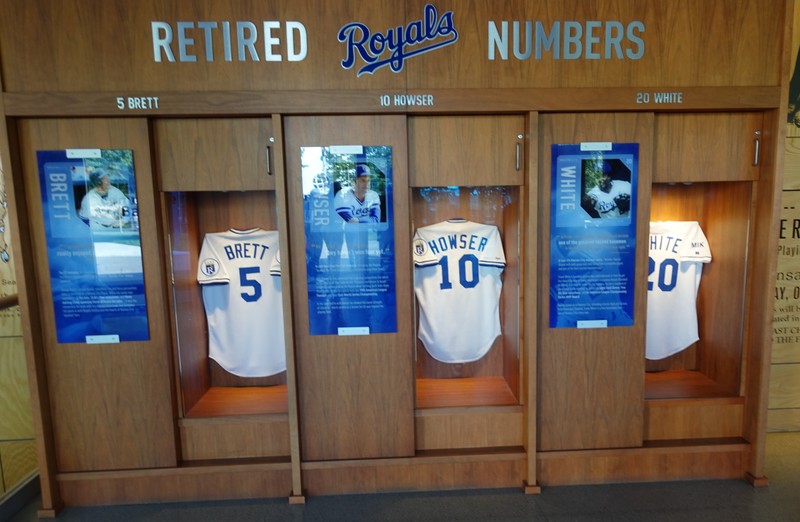
The museum includes several exhibits about the Kauffman family and the early history of the team
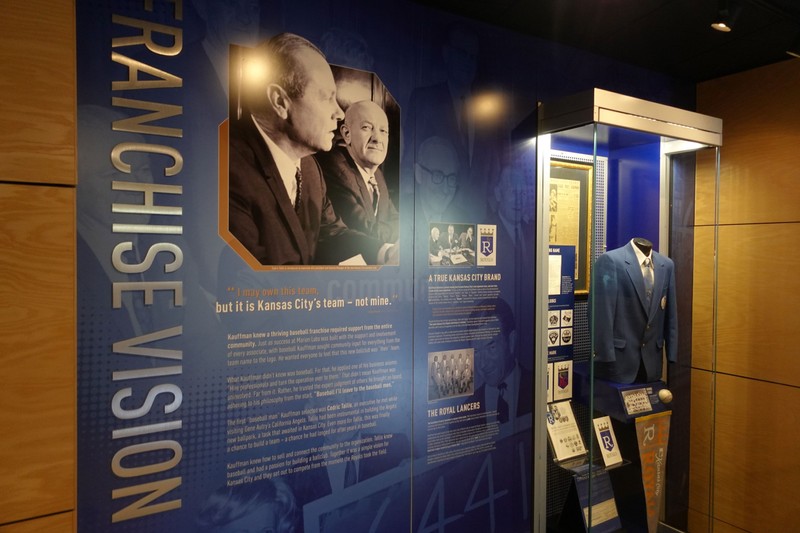
Exhibits include general information about baseball
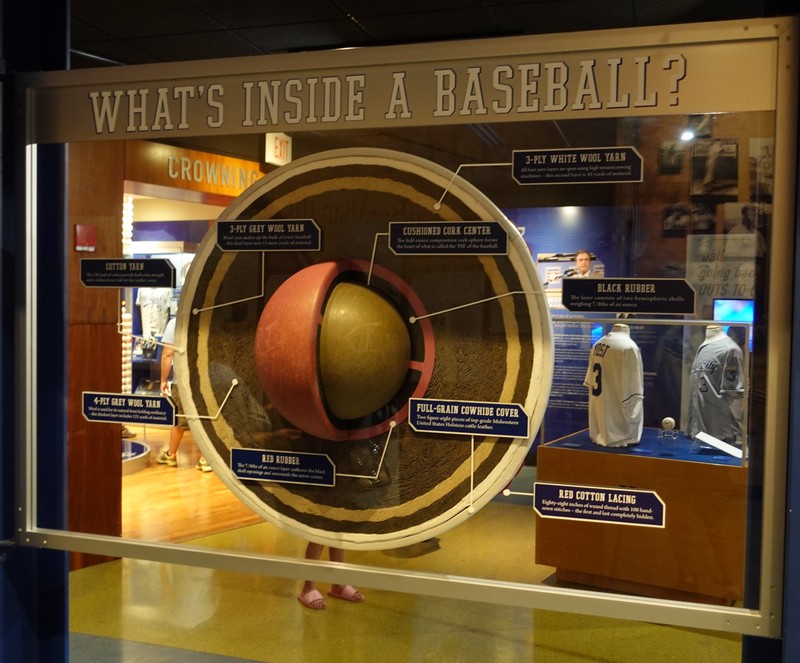
A special section offers information about sportscasters
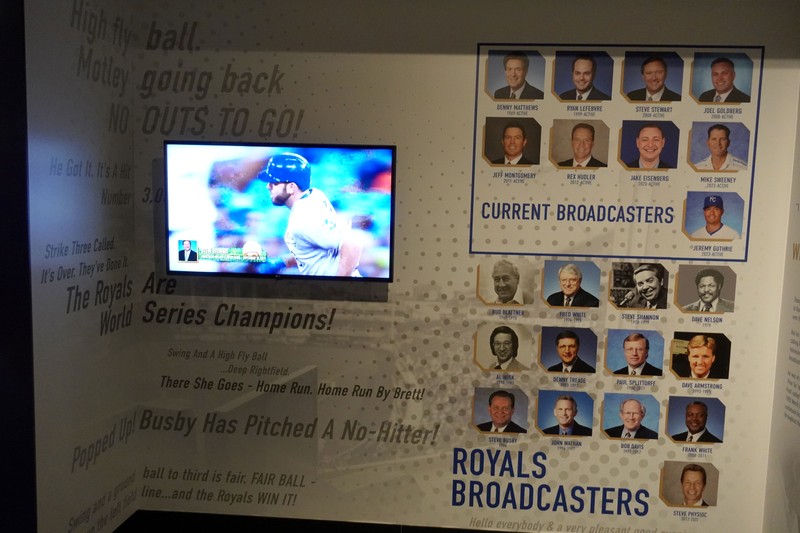
Frank White's Gold Gloves
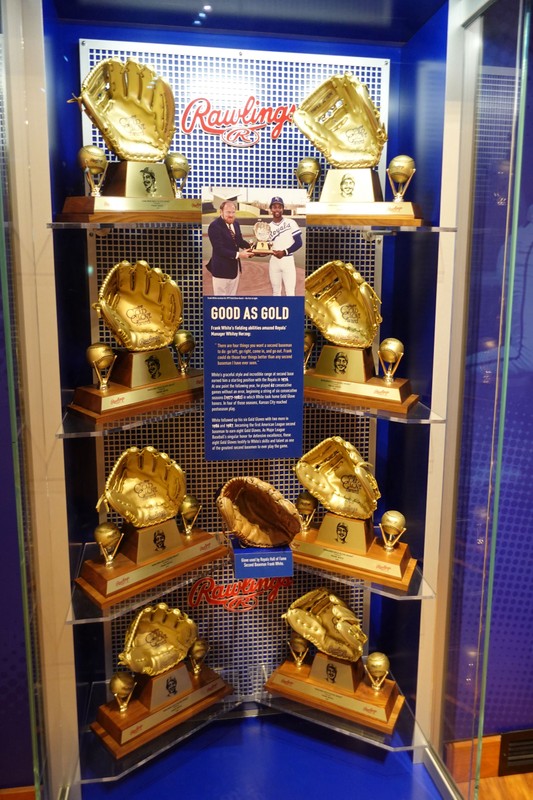
Exhibits include information about how baseball has changed over time
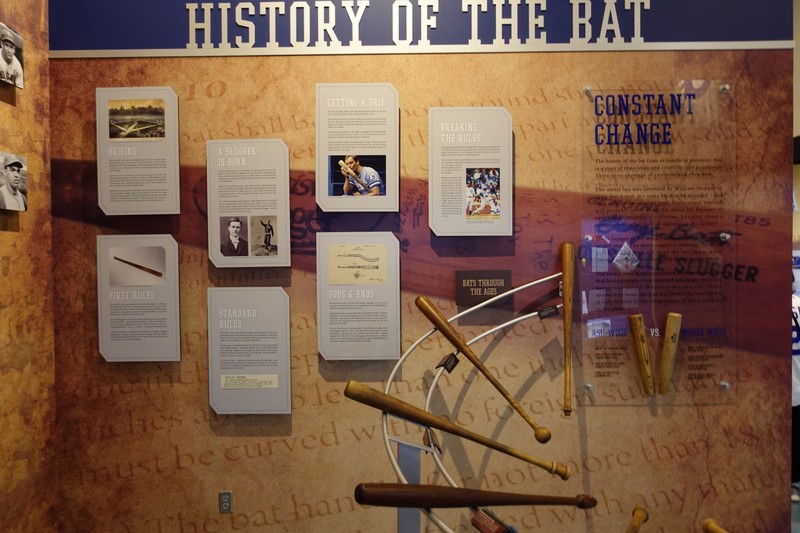
The exhibits include photographs and artifacts related to Kansas City baseball
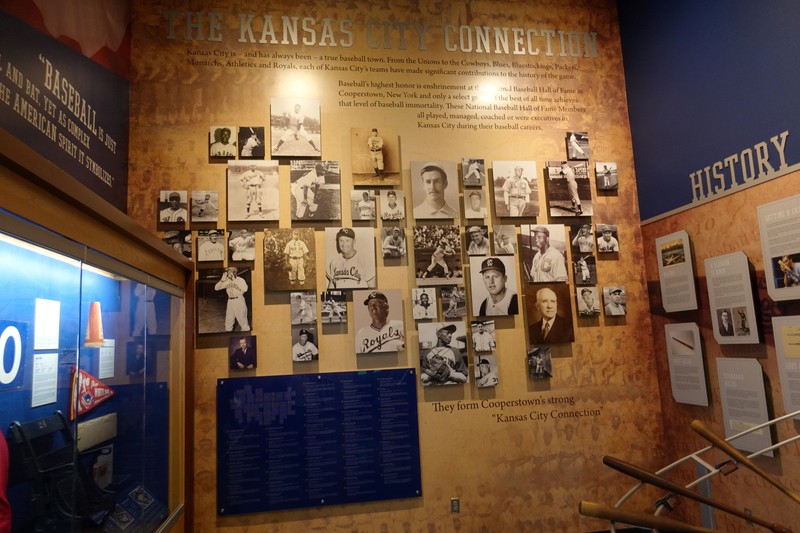
A tribute to George Brett's 3154 hits made from 3154 baseballs
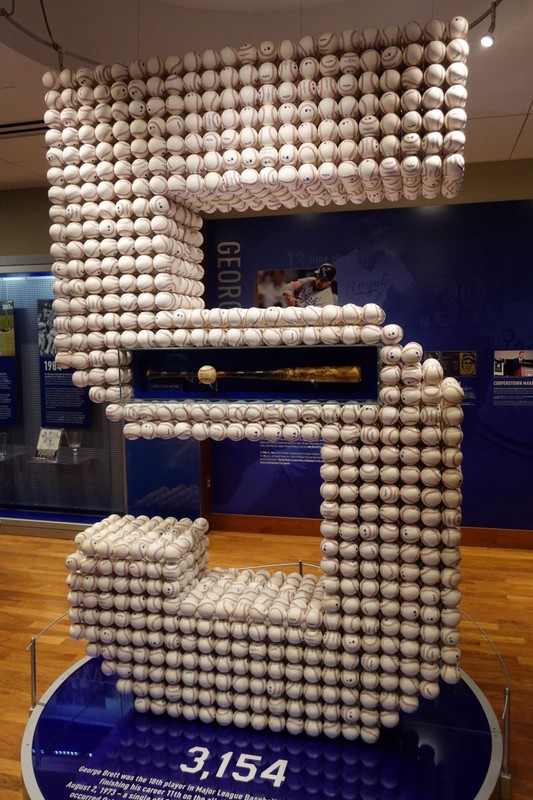
The 1985 and 2015 World Series trophies
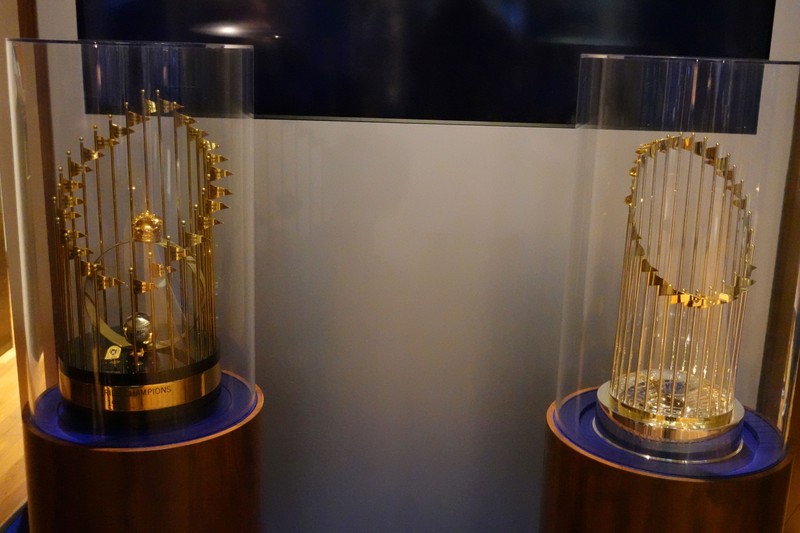
Backstory and Context
Text-to-speech Audio
In 1968, Kansas City was granted one of the four expansion teams in Major League Baseball. Local philanthropist and entrepreneur Ewing Kauffman purchased the team with a commitment to give back to the community. Kauffman used innovative approaches to improve the players and take care of his staff, just as he did in business. The Royals, named for Kansas City’s annual American Royal barbeque contest, became the best of the new expansion teams. After years of training and improvement, the Royals made consecutive postseason showings in the late 70s, also winning division games. They won their first World Series Championship in 1985, a feat they wouldn’t see again for three decades. The 1990s proved to be strenuous on the team in play and ownership. Mr. K passed away in 1993, just a month after the Royals Stadium was renamed in his honor. The new CEO David Glass had trouble turning the team around but in 2014 the Royals advanced to the World Series, which resulted in a loss. However, the team made franchise history in 2015 with back-to-back World Series appearances, this time clinching the championship win. New owner John Sherman took over in 2019 and hopes to bring stability and respect back to the franchise.
Prior to the Royals, the Athletics were Kansas City’s team after being transferred from Philadelphia in 1954. Fans showed up in record numbers, but owner Arnold Johnson’s motive for profit over the team and fans became apparent. In December 1960, Charles “Charlie” O. Finley purchased controlling interest in the team, which fans regarded as the savior of baseball in Kansas City. He invested in improvements for Municipal Stadium and uniforms for the team, with the intention to keep the A’s permanently in KC. However, due to continuously losing seasons and poor fan attendance, Finley was actively looking to relocate the team, even despite the approval of a $102 million bond measure to build a new sports complex. At the end of the 1967 season, the Athletics once again finished in last place, and the American League granted the move of the team to Oakland, California.
In early 1968, the MLB approved to expand the league and Kansas City was granted one of four expansion teams. After beating out other local interests, philanthropist, and successful owner of Marion Laboratories, Ewing “Mr. K” Kauffman became the owner of the new franchise. Inspired by the economic boost this would offer the community and with encouragement from his wife Muriel, Kauffman made a commitment to restore the culture of the baseball establishment and give back to Kansas City.
Kauffman had one year to get his new MLB club started. After holding a naming contest, fan suggestions included the Plowboys, Pythons, Canaries, Bovines, Batmen, various Indian tribes, the Caps, and even worse the Kauffs, Kauffies, and Kauffers, but Ewing chose The Royals in honor of the American Royal livestock show held annually in KC since 1899. Blue and White were chosen as team colors which were the colors of his horse racing stable. The Royals became the first team to offer insurance, a pension, and profit sharing to members of the office staff. He hired a booster sales team called the Royal Lancers, which used an aggressive marketing approach and included some of the incredible sales force from Marion Labs - setting the American League record for ticket sales. He also hired Cedric Tallis as the Royals' first general manager and recruited a management team of Lou Gorman, Syd Thrift, Jack McKeon, John Schuerholz, and Herk Robinson, who all went on to become general managers of Major League clubs.
After playing their first season in 1969, the Royals were the best of the four new expansion teams - outfielder Lou Piniella was named Rookie of the Year. In 1970, Kauffman opened the Royals Baseball Academy in Sarasota, Florida for the improvement of his players. This innovative approach to training proved successful as the following season would be the Royals' first winning season, placing second in the Western Division. The Academy closed after a few years due to cost, but the techniques and technology introduced and developed by the Academy became standard practice across the game, including the use of radar guns, pitching machines, videotaping, mandatory stretching, strength training equipment, and even stopwatches.
The new Royals Stadium opened in 1973, the only facility built solely for major league baseball between 1962 and 1991. The team continuously improved, seeing many postseason games including division wins in 1976, 1977, 1978, and 1980, and the team's first World Series championship win in 1985. The Hall of Fame was established the following year to celebrate the accomplishments and contributions to Royals baseball. In 1990, Kauffman regained complete control of the Royals, but the team would see many changes and struggles in the coming decades.
Mr. K was inducted into the Royals Hall of Fame on May 23, 1993, which marked his last public stadium appearance. As Ewing grew older, he also worried about the fate of the team. He wanted to keep the Royals in Kansas City after his passing, so he created a succession plan by donating the team to the Greater Kansas City Community Foundation, with stipulations that the team had to remain in Kansas City and the proceeds from the sale would be donated to local charities. Royals Stadium was then renamed to Kauffman Stadium on July 2 and is the only American League stadium named in honor of a person.
After Mr. Kauffman’s passing on August 1, 1993, David Glass became the interim CEO and Chairman of the Board of Directors. Glass later became the sole owner on April 18, 2000. In 2014 after decades of losing seasons, the Royals saw their first postseason game since 1985. They advanced to the World Series, however, the season ended in a loss after seven energizing games. In 2015, the team made franchise history with back-to-back World Series appearances and finished the season with a win.
The Royals saw new leadership again in November 2019 when John Sherman and a group of more than twenty local investors led by Sherman bought the team from Glass.
Sources
Kauffman, Kauffman Foundation. Accessed June 7th 2022. https://www.kauffman.org/emk/kauffman/.
Kansas City Athletics Team History, Sports Team History. Accessed June 7th 2022. https://sportsteamhistory.com/kansas-city-athletics.
Rieper, Max. Losing a sports team: The relocation of the Kansas City Athletics, SB Nation. January 20th 2016. Accessed June 7th 2022. https://www.royalsreview.com/2016/1/20/10761476/losing-a-sports-team-the-relocation-of-the-kansas-city-athletics.
Kansas City Royals Team History, Sports Team History. Accessed June 7th 2022. https://sportsteamhistory.com/kansas-city-royals.
Front Office Directory: John J. Sherman, MLB. Accessed June 7th 2022. https://www.mlb.com/royals/team/front-office/john-sherman.
Photo by David Trowbridge
Photo by David Trowbridge
Photo by David Trowbridge
Photo by David Trowbridge
Photo by David Trowbridge
Photo by David Trowbridge
Photo by David Trowbridge
Photo by David Trowbridge
Photo by David Trowbridge
